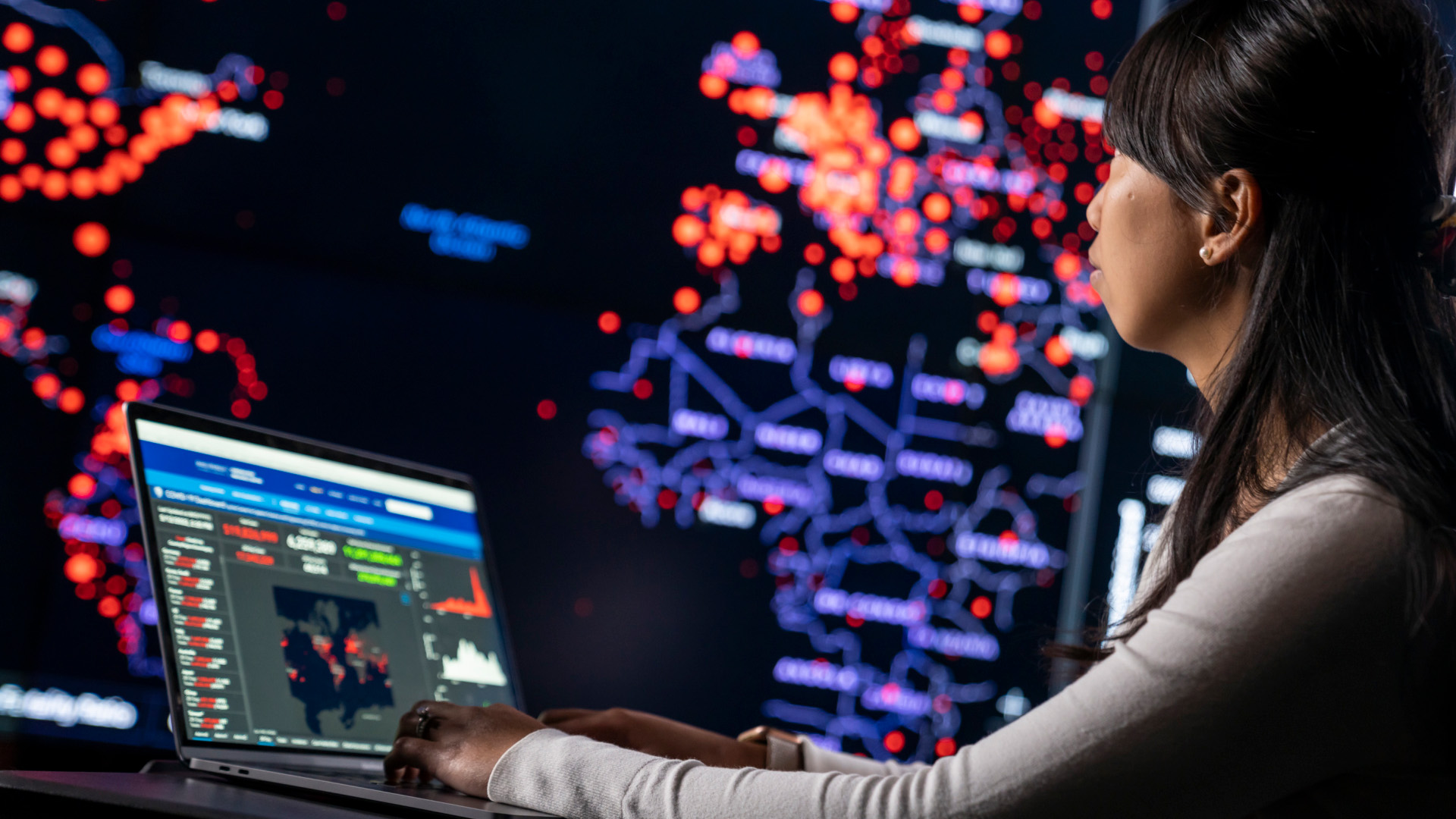Global Health Mission Area
Facilities
Our Facilities
Among our hundreds of advanced laboratories, APL maintains dozens of world-class facilities for advancing national and global health for civilians and warfighters alike.
Below is a small sampling of APL’s labs for, and capabilities in, health response, analytics and operations, biology and chemistry, and more.



Human Behavior in Advanced Environments (BeHAVE) Lab
The BeHAVE Lab facilitates basic and applied research, rapid prototyping, and testing and evaluation to improve understanding of and advance human performance. The facility houses a variety of technologies for physiological measurement, human performance modeling and simulation, virtual reality operation and behavioral simulation, and human-in-the-loop testing.
Biology and Aerosol Research Corridor (BARC)
Spanning roughly 2,800 square feet, this robust set of biological laboratories supports a full range of research in molecular biology, microbiology, virology, biochemistry, microfluidics, microscopy, and genomics, with supporting informatics capabilities. BARC supports testing and evaluation of current and novel biological sensors against bioagents and simulants, providing state-of-the-art biological analysis equipment for baseline characterization. These labs include dedicated microbiological culture, molecular and biochemical analysis laboratories, and multiple molecular analysis labs and tissue culture rooms for mammalian cell culture and microphysiological systems, and they employ a chain-of-custody system to support environmental sample analysis. Dynamic aerosol capabilities exist for dry and wet aerosol dissemination of bacteria (vegetative and spore), viruses, and toxins/proteins, and combustion aerosols are also used for test planning and execution, biological signature identification, quality assurance/quality control ground truth/reference, and assays/quantification.
Biological Research Innovation Center (BRIC)
APL established the BRIC to strengthen national security against threats to our nation’s health, resources, and infrastructure. BRIC is an advanced collaboration and computing center for research and innovation to solve the most critical challenges in biothreat security, featuring a novel virtual environment and physical center, where cross-functional, interdisciplinary teams collaborate using experimental, computational, and analytic research data. Biome is currently the flagship project in the BRIC environment and delivers a fused picture of emerging biothreats to provide early warning, and facilitate decision-making, by integrating multisource surveillance and research data into an information-rich, user-friendly environment.
Health Engineering and Analytics Lab (HEAL)
HEAL enables health-related collaboration and innovation. The lab combines a mock intensive care unit for operationally representative technology investigation, a physical space for hardware prototyping and testing, and a demonstration and teaming area that leverages a foundational analytical platform to support big data analytics and real-time data visualizations.
Genetic Sequencing Laboratory
This 1,467-square-foot multiroom facility comprises a virology lab, a central genome sequencing lab housing sequencing instruments, a dirty sample preparation room, a clean room, a template preparation room, a darkroom/gel room, and a shared testing and evaluation space. This self-contained facility can process samples in the lab and data on the back end, with room to incorporate new technologies and equipment. Instruments in this lab are connected directly to a centralized computing core to facilitate bioinformatics and computational biology analytics.
Workspace for Innovative Operational Decision Systems (WOODS)
The WOODS is a collaborative space designed to support experimentation and development related to operation centers and decision systems (for example, for emergency or incident response operations). Its reconfigurable design supports 24/7 operations, and it has redundant power and infrastructure to provide resilience.
Linear Accelerator Facility
Designed for experiments requiring high radiation fields, this lab consists of an accelerator hall, an experimental cell, and a radiochemistry laboratory, all equipped with full safety systems.
BioVALT
This state-of-the-art instrumentation laboratory features a number of specialized test devices used for imaging, biological tissue preparation, and impact testing, including the Vertical Accelerator Load Transfer System (VALTS). VALTS is a vertical impact simulator used to conduct tests specific to underbody blasts by simulating roadside mine blasts. These tests are used to study the influence of posture or armor on kinematics and to help produce data to validate predicted injuries and potential comorbidities.
Blast Overpressure Simulation System (BOSS)
BOSS is a gas-driven advanced blast simulator with a 36 × 36 foot cross-sectional test area capable of accommodating full-scale human surrogate systems. Peak overpressures in the main test region range from 15 to 30 pounds per square inch and 6 to 8 milliseconds in duration. BOSS has been used to develop a methodology to test and evaluate headborne personal protective equipment.
High Throughput Synthetic Laboratory
This facility is focused on multiplexed robotic automation of chemical preparation processes, including chemical reaction execution, solvent removal, purification, and analysis.